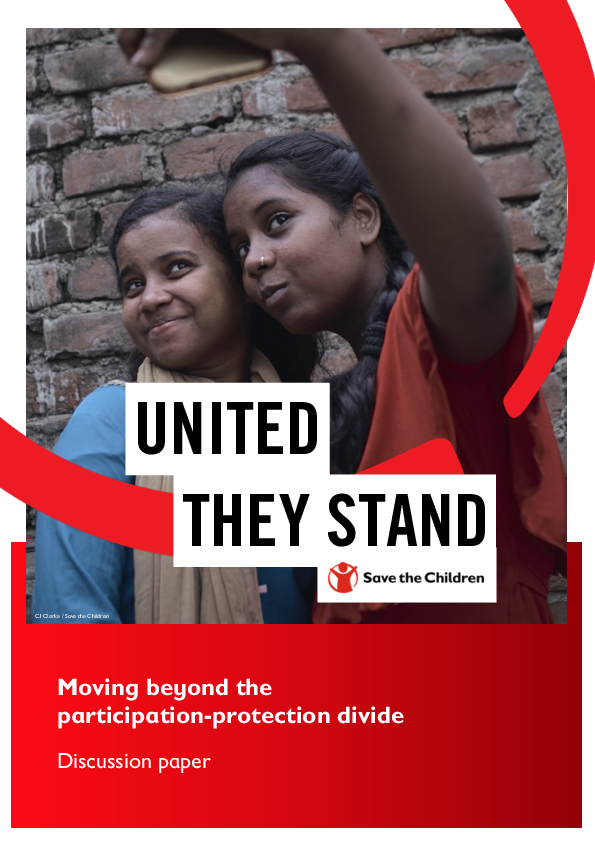
Reports
United They Stand: Moving beyond the participation-protection divide: Discussion paper
Publication year:
2021
English
Format:
pdf (2.7 MiB)
Publisher:
Save the Children International
Written primarily for those working in child-focused organisations… the paper examines why the UNCRC obligations commonly grouped under participation and protection are frequently treated as oppositional and in conflict. No such binary competition is put forward for the fulfilment of other human rights. A child’s rights to education, healthcare and social security are seen as inherently protective but not always their right to be heard. Why?
The publication is truly a ‘Discussion Paper’. The ideas and theories are not absolute and encourage further reflection and debate. The concepts may make us feel uncomfortable and push us outside of our comfort zone by challenging long-held beliefs and practices related to children’s safety, protection and participation. We look forward to these discussions and debates, as well as the light bulb moments and opportunities to raise our ambitions and goals for supporting children and their rights.
To help entice you, here are a few of our favorite excerpts:
We have to widen our perceptions of what it means to be heard, and what it means to be safe—and to recognise the strong bonds between these two states.
Children’s clubs and schools which seek to engender a democratic, listening culture will not succeed while corporal punishment and other forms of violence against children remain sanctioned. Silenced and ignored children are not safe; abused and exploited children are not heard.
The notion that children should only be supported or encouraged to express their views when their safety can be guaranteed risks perpetuating paternalistic cultures where adults always know best, and are in control. It also denies the resistance, resilience and reality of children’s lives.
A focus on children’s right to be heard conveys respect, dignity and genuine solidarity. This is protection in its widest form, and the summation of world human rights goals.
That the UNCRC was the first human rights treaty to grant a class of people, children, the right to have their views accorded due weight signals the incredible social change imagined. We are not there yet.
Within the report you will also find:
Pages 23-24 contain a chart with practical, protective actions which can minimize the risks surrounding children’s right to be heard.
Page 27 includes a list of ‘check and change’ actions that aim to make the fulfilment of children’s right to be heard instinctive and unexceptional [we can see many of these ambitions already unfolding within Save the Children].
Page 28 we explore a framework for ethical action.
Read full abstract
Authors
View & Download
Document information
Publisher
Authors
Format
Content type
Rights
© Author/Publisher
Found a mistake? Help us improve!
If you have noticed a document assigned to the wrong author or any other inaccuracies, let us know! Your feedback helps us keep our data accurate and useful for everyone.
Share
Link
